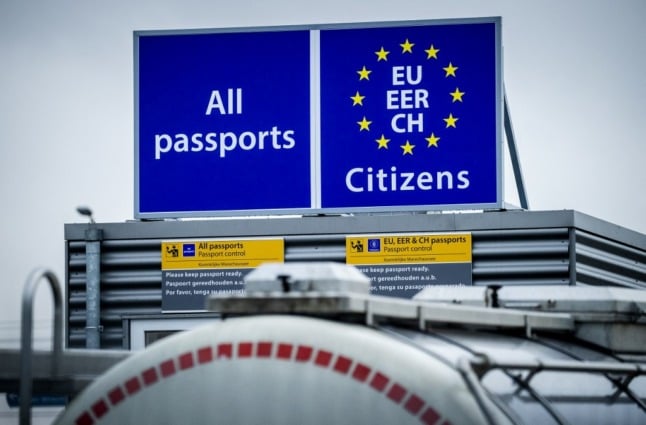Since the end of the Brexit transition period, Brits who don’t have either a residency card or a visa face limits on their stays in France.
But while the 90-day rule was widely known in advance – and has always been in place for other non-EU nationals like Americans and Canadians – it was not clear how strictly it would be policed.
Now British visitors have reported being stopped and fined at the border upon exit if the entry stamp in their passport is more than 90 days old.
The Local has previously reported on the case of Kerry, who was fined after her passport was incorrectly stamped as a non-resident.
But several other Brits have reported being fined after visits to France that lasted more than 90 days, in one case for an overstay of just two days. Fines can also be accompanied with a stamp in your passport marking you as an over-stayer, which can make future travel complicated.
Brits who live in France can prove their residency status by showing their carte de séjour, in which case the 90-day rule does not apply.
However those who are not resident and are merely visiting – either on holiday or to stay in second homes – have only two options; either stay less than 90 days or get a visa.
90 days
The 90-day rule is broken down in more detail HERE, but in essence it gives visitors from certain non-EU countries access to short visits without the need to get a visa.
The allowance is 90 days in every 180 – so in total over the course of a year you can be in France for 180 days, but these cannot be taken together. This is a problem for second home owners who like to spend the summer in France and the winter in the UK, or vice versa.
The other important thing to note is that the limit is for the entire EU and Schengen area, so trips to all EU or Schengen countries, not just France, count towards the 90-day limit.
To help you work out your allowance, you can find the Schengen calculator here.
Visa
Those who want to spend more than 90 days at a time will need to get a visa.
You can find a fuller explanation of the French visa system HERE.
Different types of visa exist, but the most common for second-home owners who do not intend to work in France is the visitor visa.
Crucially, visas must be applied for in your home country so that can enter France showing both the passport and visa, so that the 90-day ‘clock’ does not begin ticking.



 Please whitelist us to continue reading.
Please whitelist us to continue reading.
It’s one thing informing the public but someone needs to urgently inform those working at the border when to stamp the passport and when not to. I mean, how difficult can that be ?